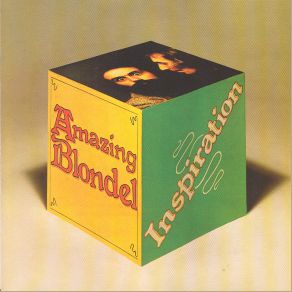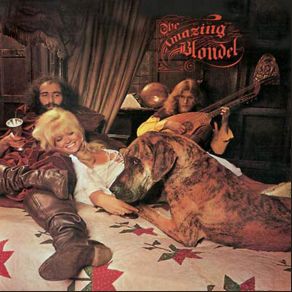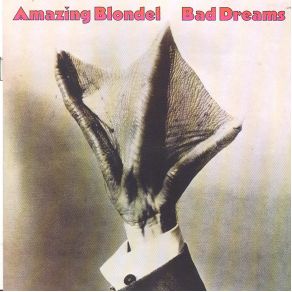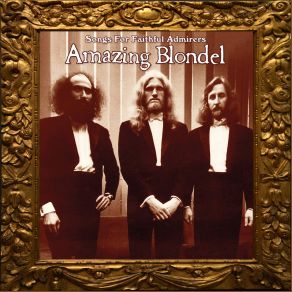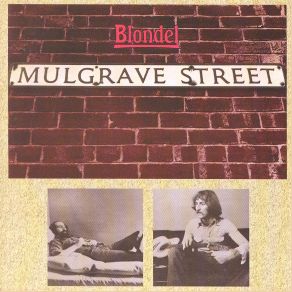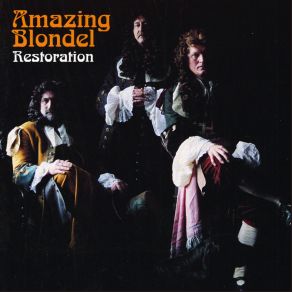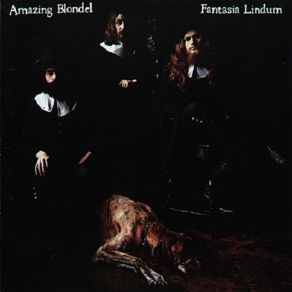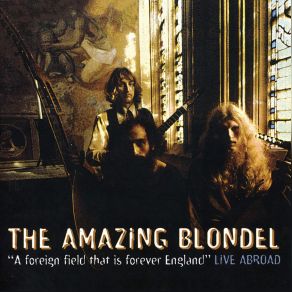Amazing Blondel
Wikimp3 information about the music of Amazing Blondel. On our website we have 17 albums and 4 collections of artist Amazing Blondel. You can find useful information and download songs of this artist. We also know that Amazing Blondel represents Rock genres.
Biography
[Edit]One of England's more unusual rock outfits of the 1970s, Amazing Blondel were a trio whose members played instruments dating from medieval to Elizabethan times, and songs styled to those periods. The group consisted of three musicians from Scunthorpe, England: John David Gladwin (lute, oboe, cittern, double bass), Terry Wincott (pipe organ, harmonium, cittern, recorders, flute, crumhorn, tabor pipe, ocarina, guitar), and Edward Baird (guitar, guitern, percussion). Gladwin and Wincott had been born in Scunthorpe and attended school together, where they crossed paths with Hampshire-born, Scunthorpe-raised Baird. Gladwin and Wincott had been in a couple of rock & roll bands in school together, and afterward formed a group called the Dimples. In 1966, they formed Gospel Garden, with Craig Austin, Steve Cox, and Jeff Tindall, who managed to leave behind a few demo tracks that reveal them as a pop-psychedelic outfit, and Gospel Garden evolved into Methuselah. This was a hard-rocking band with both a progressive bent and a folk bent, the latter attributes embodied in an acoustic interlude that Gladwin and Wincott used to play in the middle of the band's set.
Methuselah had managed the neat trick of getting signed to a U.S. label (Elektra Records) without a recording contract in their native England, but they didn't last past the second of a three-album deal (and that second LP was not only never released, but disappeared without a trace, according to Wincott). Gladwin and Wincott wearied of Methuselah's high-wattage sound, and of playing shows where the instruments were so loud that it was impossible to hear themselves singing or what they were playing; they preferred the acoustic part of the group's sets, in which they'd briefly taken center stage, and since those acoustic performances had gone over well with audiences, the duo moved in that direction. At the time, there was the beginning of a rebirth of interest in medieval and Renaissance music taking place in the field of serious music, under the guidance of figures such as Roger Norrington and David Munrow — folk musicians such as Bert Jansch and acts such as the Pentangle were also exploring some of this music in their own way, and even groups like the Rolling Stones had taken the plunge into Renaissance-inspired sounds on songs such as "Lady Jane." Gladwin and Wincott listened to some of the material emerging from the serious scholarly field and their folk and rock equivalents, but they also reached out to the faux medieval balladry recalled from television shows of the 1950s. They worked out a new repertory of songs that sounded a few hundred years out of date, and chose the name Blondel, at the suggestion of one listener, derived from the renowned court musician of King Richard I (Richard the Lionhearted), and later expanded it to Amazing Blondel.
In 1970, with help from several musicians, including legendary British guitarist Big Jim Sullivan and drummer Clem Cattini, they recorded a self-titled album credited to "The Amazing Blondel," which was released on the newly formed U.K. division of Bell Records (which later managed to lose the master tapes to the album). That album was closer to a mainstream rock recording than anything else the group ever released, with elements of psychedelia lurking about and even a blues influence evident in some of the material, though the three archaic-sounding numbers, "Saxon Lady," "Season of the Year," and "Shepherd's Song," pointed the way to their subsequent work. Baird joined Gladwin and Wincott to make a trio soon after the recording was finished, and their sound filled out nicely — as a trio, they had a fuller musical palette, and Gladwin quickly emerged as the most prolific songwriter of the three. After opening for the band Free at a concert, the members of that group arranged for Amazing Blondel to meet and audition for Chris Blackwell of Island Records. Although Island had started out as a ska and reggae label, the company had lately moved into progressive rock in a serious way, with licensing deals involving the first releases of King Crimson and Emerson, Lake & Palmer, and Amazing Blondel came along at just the right time to get the offer of a contract from Blackwell, with a good-sized advance as well.
Now they set about honing their sound on-stage as well as in the studio. The trio became known for playing upwards of 40 instruments on-stage, though without backup musicians — each song was simply planned for no more than three instruments at any one time. Although Gladwin and company were the first to admit that they were no virtuosos on their chosen instruments, their work sounded credible to modern ears, and their shows were fun despite the delicacy of the array of instruments, which required as much as five hours to get into tune — and unlike most rock acts of the era, if they couldn't get them into tune, the group didn't perform. Their Island debut, Evensong (1970), produced by Paul Samwell-Smith, showed them still finding their way amid a repertory of decidedly medieval-sounding balladry and madrigals, but received encouraging reviews and found a cult audience amid the coalescing audience for British folk music and progressive rock, more than sufficient to justify a second album.
Despite its reliance on acoustic instruments, the trio wasn't averse to composing extended suites that ran up to 25 minutes, sometimes (quite often, actually) in Latin. The band's second Island LP, Fantasia Lindum, filled its entire first side with such a composition. And while some of the music had a repetitive quality, the best of it played off of achingly beautiful melodies. Additionally, Fantasia Lindum brought into the Blondel fold Adrian Hopkins, the pianist/harpsichordist who, as an arranger and conductor, would play a major role in helping the group realize its greatest successes. England, released in 1972, was the high point for the trio, an album depicting a rich musical canvas across which Gladwin, Wincott, and Baird painted lush and varied tone paintings, mostly "landscapes" in nature, filled with rich detail and attractive, hauntingly beautiful hooks and choruses. The album got them their heaviest airplay ever in America, on progressive-oriented stations such as WNEW-FM in New York, and on many college stations of the era, though only modest sales; still, the album, distributed by Capitol Records in the U.S.A., even managed to make it into some department store record racks. By this time, the trio was widely known on the Continent as well as in England, and played as a support act on bills with such top rock bands as Procol Harum and Genesis.
Gladwin left soon after the release of England, however, and the Amazing Blondel were reduced to a duo for their follow-up, Blondel (1973). That album also marked the last of their "period" material — much of the music on it still sported an antique character, but some of it showed the definite influence of modern progressive rock, with Paul Rodgers of Free and Steve Winwood providing some of the vocals and instrumental accompaniment, respectively. On subsequent albums, beginning with Mulgrave Street, the group — supported by various rock musicians, including Winwood, Rodgers, and Mick Ralphs — would aim for a harder, more contemporary sound vaguely resembling Steeleye Span. Their contract with Island ended after Blondel, and the duo next signed with DJM, a record label offshoot of Dick James Music. They subsequently released four albums on DJM and retained a following in Europe and Japan, but disappeared from the radar screen in the United States, where DJM was all but invisible as a label — their album Mulgrave Street got very limited exposure in America as an import. Live in Tokyo (which was actually recorded in Europe) marked the end of their recording history in 1977.
Even as Baird and Wincott continued to record and perform, Gladwin kept his hand in the field with what he later called a Blondel clone, called English Musicke, a trio that included Adrian Hopkins and Paul Empson. The time wasn't right for such a venture to succeed, however — this was the age of disco and punk, and neither this group, nor the various solo recordings made by Baird and Wincott during the late '70s, ever enjoyed the exposure that Blondel had enjoyed early in the decade.
In 1997, 20 years after their last appearance as a duo and nearly a quarter-century following Gladwin's departure, the Amazing Blondel trio re-formed and recorded its first album since 1972, entitled Restoration. It was as though they'd never been apart, and the resulting record was a perfect follow-up to England, a quarter-century removed. This event followed the reissue of their Island and Bell recordings on the HTD and Edsel labels, and coincided with the first of several raids on the vaults. The first of the Blondel archival issues was a totally unexpected live album, A Foreign Field That Is Forever England, made from tapes from the early-'70s performances. Two more collections of archival tracks, Going Where the Music Takes Me (2006) and On with the Show (2007), followed over the next decade, along with a fresh reissue of their first two Island albums by Beat Goes On, for a second go-around on CD.
Title: A Foreign Field That Is Forever England
Artist: Amazing Blondel
Genre: Rock, World Music, Songwriter/Lyricist, Contemporary Folk
Title: The Amazing Blondel & a Few Faces
Artist: Amazing Blondel
Genre: Rock, World Music, Songwriter/Lyricist
Title: The Amazing Blondel & a Few Faces (Remastered)
Artist: Amazing Blondel
Genre: Rock, World Music, Songwriter/Lyricist
Title: THE AMAZING ELSIE EMERALD
Artist: Amazing Blondel
Genre: Rock, World Music, Songwriter/Lyricist
Title: On With the Show (In Per Ostendo)
Artist: Amazing Blondel
Genre: Rock, World Music, Songwriter/Lyricist
Title: Going Where the Music Takes Me
Artist: Amazing Blondel
Genre: Rock, World Music, Songwriter/Lyricist
Title: A Foreign Field That Is Forever England - Live Abroad
Artist: Amazing Blondel
Genre: Rock, Hard Rock, Metal, World Music, Pop, Celtic, Folk
Collections
Title: Seaside Folk
Genre: Songwriter/Lyricist
Title: The Festival of Folk Volume One
Genre: Folk Rock, Songwriter/Lyricist
Title: This Is Folk
Genre: Songwriter/Lyricist
Title: Anthology Of English Folk
Genre: Folk Rock, World Music


